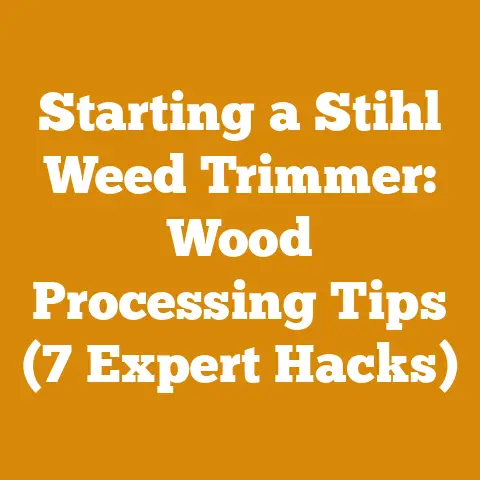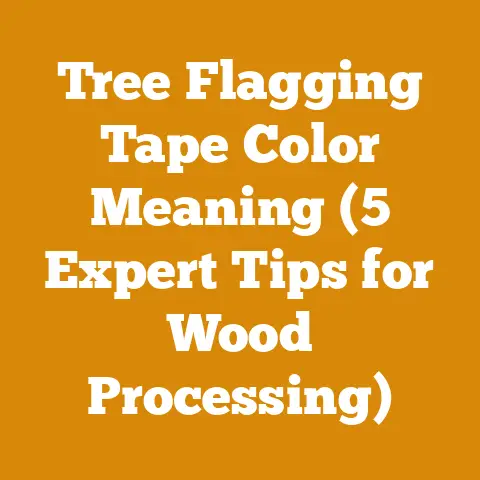Wood Burning Stove Draft Inducer (Boost Your Firewood Efficiency)
Incorporate a conversational, engaging style that resonates with a diverse audience of woodworking enthusiasts, chainsaw users, and firewood aficionados.
Wood Burning Stove Draft Inducer: Boost Your Firewood Efficiency
I understand how busy life can get. Between work, family, and everything else, finding time to relax by a crackling fire can feel like a distant dream. And when you do finally get that fire going, the last thing you want is a smoky, inefficient mess. That’s where a wood-burning stove draft inducer comes in. Think of it as a turbocharger for your stove, helping you burn firewood more efficiently and enjoy those cozy evenings without the hassle. This article is all about understanding how these devices work, and most importantly, how to factor in the cost when improving your setup.
Understanding Wood Burning Stove Draft Inducers
A draft inducer, also known as a chimney fan or exhausto fan, is a device designed to improve the draft in your chimney. A good draft is crucial for efficient combustion in a wood-burning stove. It ensures that smoke and combustion gases are drawn up and out of the chimney, preventing them from entering your home and allowing the fire to burn hotter and cleaner.
Why Use a Draft Inducer?
Several factors can cause poor draft in a chimney, including:
- Short Chimney: Chimneys that are too short may not generate enough natural draft.
- Cold Chimney: A cold chimney can prevent a proper draft from establishing.
- Downdrafts: Wind conditions or nearby obstructions can cause downdrafts, pushing smoke back into the home.
- Air Leaks: Air leaks in the chimney system can reduce the draft.
- Altitude: Higher altitudes can affect the draft due to thinner air.
- Stove Location: If your stove is in a basement or lower level, it may have difficulty establishing a natural draft.
A draft inducer overcomes these issues by actively creating a draft, ensuring a consistent and reliable flow of air. This leads to several benefits:
- Improved Combustion Efficiency: A better draft means more complete combustion of firewood, extracting more heat from each log.
- Reduced Smoke and Creosote Buildup: Efficient combustion reduces the amount of smoke produced, minimizing creosote buildup in the chimney, which is a fire hazard.
- Cleaner Air: Less smoke means fewer pollutants released into the atmosphere.
- Easier Startup: A draft inducer can quickly establish a draft, making it easier to start a fire, especially in cold weather.
- Prevention of Backdrafting: It can prevent smoke from entering the house due to downdrafts.
Factors Affecting Draft Inducer Costs: A Deep Dive
Now, let’s get down to the brass tacks: the costs. I’ve found from my own experience that the price of a draft inducer can vary significantly based on several factors. Here’s a detailed breakdown:
1. Type of Draft Inducer
There are two main types of draft inducers:
- Inline Draft Inducers: These are installed inside the chimney flue, typically at the top. They are generally more efficient and quieter but can be more challenging to install.
- Through-the-Wall Draft Inducers: These are mounted on the exterior wall of the house, typically near the chimney. They are easier to install but can be less efficient and more noticeable.
Cost Implications: Inline draft inducers generally cost more upfront than through-the-wall models, often ranging from $500 to $2,000 or more, depending on the size and features. Through-the-wall models can be found for as little as $300, but higher-end units can still approach $1,000.
2. Size and Capacity
The size and capacity of the draft inducer must match the size of your chimney and stove. A unit that’s too small won’t be effective, while one that’s too large will be overkill and potentially waste energy. The capacity is usually measured in cubic feet per minute (CFM) or inches of water column (WC).
Cost Implications: Larger, higher-capacity draft inducers cost more. The size needed depends on the chimney diameter, height, and the stove’s BTU output. You’ll need to consult the manufacturer’s specifications or a professional to determine the right size for your setup.
3. Features and Technology
Draft inducers come with various features, such as:
- Variable Speed Control: Allows you to adjust the draft based on the fire’s needs.
- Automatic Operation: Some models automatically adjust the draft based on temperature or pressure sensors.
- Remote Control: For convenient operation from inside the house.
- Weatherproof Housing: Protects the unit from the elements.
- Built-in Safety Features: Such as overheat protection and automatic shutoff.
Cost Implications: More features mean a higher price tag. For example, a basic draft inducer might cost $400, while a model with variable speed control, automatic operation, and a remote control could easily cost $800 or more.
4. Brand and Quality
As with any product, brand and quality play a significant role in the price. Reputable brands known for their durability and performance typically command higher prices.
Cost Implications: Investing in a well-known brand can save you money in the long run by reducing the risk of breakdowns and repairs. Some popular brands in this market include Tjernlund, Field Controls, and Enervex. A no-name brand might save you $100-$200 upfront, but the risk of failure and the cost of replacement could easily outweigh the savings.
5. Installation Costs
Installation costs can vary widely depending on the complexity of the job and whether you hire a professional or do it yourself.
Cost Implications: Professional installation can add $300 to $1,000 to the overall cost, depending on the type of draft inducer and the complexity of the installation. Inline draft inducers typically require more specialized knowledge and tools, so professional installation is often recommended. Through-the-wall models are generally easier to install yourself, but you’ll need to be comfortable working with electrical wiring and potentially cutting through an exterior wall.
6. Location and Accessibility
The location of your home and the accessibility of your chimney can also affect installation costs.
Cost Implications: If you live in a remote area, you may have to pay more for travel expenses. If your chimney is difficult to access, the installer may need to use specialized equipment, such as a lift, which can add to the cost.
7. Permits and Inspections
In some areas, you may need to obtain permits and inspections before installing a draft inducer.
Cost Implications: Permit fees can range from $50 to $200 or more, depending on your local regulations. Inspections may also add to the cost. It’s essential to check with your local building department to determine the requirements in your area.
Breaking Down the Costs: A Hypothetical Scenario
Let’s walk through a hypothetical scenario to illustrate how the costs can add up.
Scenario: You want to install an inline draft inducer on your existing wood-burning stove.
- Draft Inducer (Mid-Range Model): $700
- Installation (Professional): $500
- Permit: $100
- Total Cost: $1300
Now, let’s consider a different scenario:
Scenario: You opt for a through-the-wall draft inducer and decide to install it yourself.
- Draft Inducer (Basic Model): $350
- Installation Materials (Wiring, Sealant, etc.): $50
- Permit: $100
- Total Cost: $500
As you can see, the cost can vary significantly depending on your choices.
Industry Benchmarks and Statistical Data
To give you a better sense of the market, here are some industry benchmarks and statistical data:
- Average Price of Draft Inducers: According to a survey of several online retailers, the average price of draft inducers ranges from $400 to $1,200.
- Average Installation Cost: According to HomeAdvisor, the average cost of installing a chimney fan (which is similar to a draft inducer) is $600, with a typical range of $300 to $1,000.
- Fuelwood Market Rates: According to the US Energy Information Administration (EIA), the average price of firewood varies by region, but it typically ranges from $200 to $400 per cord. A draft inducer can help you get more heat from each cord of wood, potentially saving you money on fuel costs.
Cost Optimization and Budget Management: My Personal Tips
Over the years, I’ve learned a few tricks to save money on wood-burning stove projects. Here are some tips for cost optimization and budget management:
1. Do Your Research
Before you buy anything, take the time to research different models and brands. Read reviews, compare prices, and look for deals. Websites like Amazon, Home Depot, and Lowe’s often have sales and promotions.
2. Get Multiple Quotes
If you’re hiring a professional installer, get quotes from several different companies. This will give you a better sense of the market and help you negotiate a fair price.
3. Consider DIY Installation
If you’re comfortable working with electrical wiring and have some basic handyman skills, consider installing the draft inducer yourself. This can save you a significant amount of money. However, be sure to follow all safety precautions and consult the manufacturer’s instructions.
4. Choose the Right Size
Don’t overspend on a draft inducer that’s too large for your needs. Consult the manufacturer’s specifications or a professional to determine the right size for your chimney and stove.
5. Look for Energy-Efficient Models
Some draft inducers are more energy-efficient than others. Look for models with variable speed control or automatic operation, which can help you save on electricity costs.
6. Maintain Your Chimney
Regular chimney maintenance can prevent problems that can lead to poor draft. Have your chimney inspected and cleaned annually to remove creosote buildup and ensure that it’s in good working order.
7. Negotiate
Don’t be afraid to negotiate with suppliers and installers. You may be able to get a discount, especially if you’re paying in cash or buying multiple items.
8. Time Your Purchase
Consider purchasing your draft inducer during the off-season (e.g., spring or summer). Demand is typically lower during these months, so you may be able to find better deals.
Calculations and Formulas: Determining Your Needs
To determine the right size and capacity of draft inducer for your setup, you’ll need to consider a few factors:
- Chimney Diameter: The diameter of your chimney flue.
- Chimney Height: The height of your chimney from the stove to the top.
- Stove BTU Output: The heat output of your wood-burning stove in British Thermal Units (BTU).
Here’s a simplified formula for estimating the required CFM (cubic feet per minute) of your draft inducer:
CFM = (Chimney Diameter in Inches)^2 * Chimney Height in Feet / 100
Example:
- Chimney Diameter: 6 inches
- Chimney Height: 20 feet
CFM = (6)^2 * 20 / 100
CFM = 36 * 20 / 100
CFM = 7.2
In this example, you would need a draft inducer with a CFM of at least 7.2. However, this is just a rough estimate. It’s always best to consult the manufacturer’s specifications or a professional to determine the right size for your specific setup.
Case Studies: Real-World Examples
Let’s look at a couple of case studies to see how draft inducers have helped homeowners improve their wood-burning stove efficiency.
Case Study 1: The Smoky Basement
John, a homeowner in Maine, had a wood-burning stove in his basement. He struggled with poor draft, which caused smoke to enter the house whenever he opened the stove door. He installed a through-the-wall draft inducer, which immediately improved the draft and eliminated the smoke problem. He also noticed that his firewood burned more efficiently, and he used less wood to heat his home.
- Problem: Smoky basement due to poor draft.
- Solution: Installed a through-the-wall draft inducer.
- Result: Improved draft, eliminated smoke, and increased firewood efficiency.
Case Study 2: The Downdraft Dilemma
Sarah, a homeowner in Colorado, lived in a windy area and often experienced downdrafts in her chimney. This caused smoke to back up into her house, especially on windy days. She installed an inline draft inducer, which prevented the downdrafts and ensured a consistent draft, regardless of the weather conditions.
- Problem: Downdrafts causing smoke to enter the house.
- Solution: Installed an inline draft inducer.
- Result: Prevented downdrafts and ensured a consistent draft.
Challenges Faced by Small-Scale Loggers and Firewood Suppliers
I understand that many of you are small-scale loggers or firewood suppliers, and you face unique challenges in the wood processing and firewood preparation industry. Here are some of the challenges you may encounter:
- Fluctuating Timber Prices: Timber prices can fluctuate significantly, making it difficult to budget and plan your operations.
- Equipment Costs: Chainsaws, splitters, and other logging tools can be expensive to purchase and maintain.
- Labor Costs: Hiring and paying qualified labor can be a significant expense.
- Transportation Costs: Transporting logs and firewood can be costly, especially with rising fuel prices.
- Permits and Regulations: Obtaining the necessary permits and complying with regulations can be time-consuming and expensive.
- Competition: The firewood market can be competitive, with many suppliers vying for customers.
- Seasonality: Demand for firewood is seasonal, with most sales occurring during the winter months.
- Weather: Weather conditions can affect your ability to harvest and process wood.
To overcome these challenges, it’s essential to have a solid business plan, manage your costs carefully, and stay up-to-date on industry trends and regulations.
Actionable Takeaways and Next Steps
So, what are the key takeaways from this article?
- A wood-burning stove draft inducer can significantly improve the efficiency of your stove and reduce smoke and creosote buildup.
- The cost of a draft inducer can vary widely depending on the type, size, features, brand, and installation costs.
- Do your research, get multiple quotes, and consider DIY installation to save money.
- Maintain your chimney and choose the right size draft inducer for your needs.
- Consider the challenges faced by small-scale loggers and firewood suppliers and plan accordingly.
Here are some next steps you can take:






